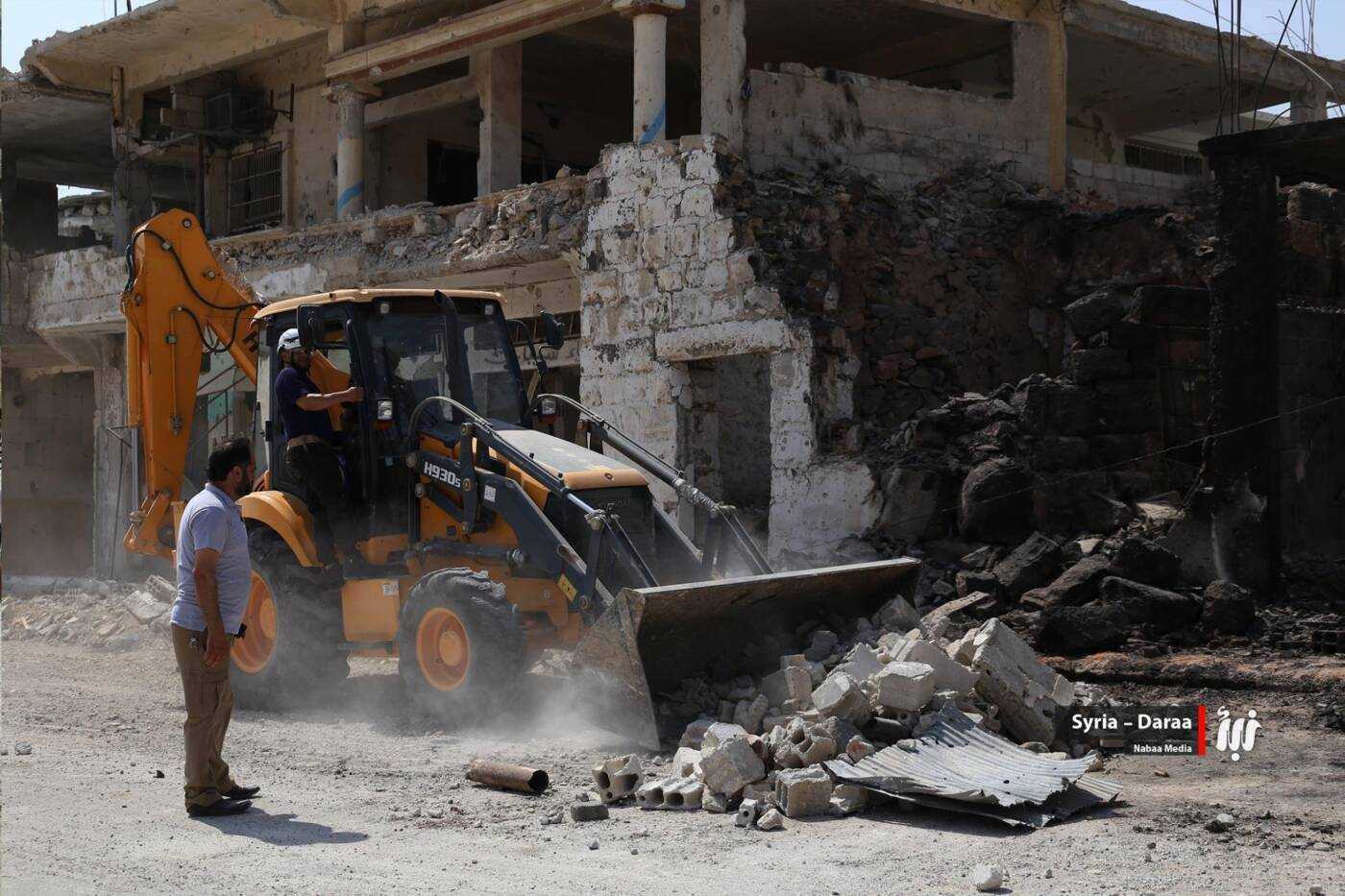Daraa residents begin to repair homes as southern ceasefire holds
AMMAN: Thousands of residents in Syria’s Daraa province are beginning […]
18 September 2017
AMMAN: Thousands of residents in Syria’s Daraa province are beginning to repair their war-damaged homes for the first time in years as a ceasefire enters its third month, offering a newfound “sense of stability” in the opposition-held south.
The ceasefire, which covers Syria’s southern provinces—including Daraa, Quneitra and Suwayda—took effect on July 9 following negotiations between Russia, the United States and Jordan.
Since then, calm has prevailed over Daraa province, a base of opposition support where, earlier this year, Russian airstrikes regularly struck the countryside as battles between regime and rebel forces raged in the eponymous capital city.
Citing the relatively stable situation as a motivating factor, thousands of Syrians are returning to Daraa province from Jordan in recent months, Syria Direct reported last week, while hundreds of others displaced within the province similarly returned to cities and towns that had previously been subject to bombardment.
In a province characterized by repeated displacement and homelessness, residents are now choosing to rebuild their homes.
It is an effort that reflects the first time in years that Syrian civilians in Daraa are willing to invest limited financial resources into their own longer-term reconstruction projects.
The ceasefire agreement “was a window of opportunity to return to the homeland and to a normal life, far from the tragedies of war and bombardment,” said Abu Ghassan, a farmer from the western Daraa town of Nawa who returned home last month from Jordan, where he worked as a construction worker.

Abu Ghassan told Syria Direct that he paid about $200 to complete minor repairs to doors and windows of his home that were damaged by war.
Abu Ghassan is one of an estimated 15 percent of residents in opposition-held areas of Daraa province who are now working on their homes, Ameen Marzouqi, local director of the opposition Department of Statistics and Administrative Affairs, told Syria Direct on Monday. His department gathers statistics from local councils in towns and cities across opposition territory in the province.
Three months ago, before the ceasefire took effect, just two percent of residents were making repairs, Marzouqi said.
As residents rebuild, an estimated 500 tons of cement are flowing into the opposition-held western Daraa countryside from regime territory every day, Abo Khalil, a construction worker in the city of Jasem in the province’s northwest told Syria Direct on Monday.
The increase, up from about 50 tons per day before the ceasefire, was made possible when the regime began to permit the entry of construction materials—albeit with tariffs imposed—into the opposition-held countryside starting in June, Abu Khalil said.
Although there has been a clear uptick in construction, the repairs taking place are largely limited to restoration, said Abu Khalil.
“Residents of this area cannot rebuild by themselves,” he said, explaining that those who have limited income cannot afford the high price of materials.
“The prices of marble and other essential building materials such as sand and gravel have increased more than ten-fold,” he told Syria Direct.

Abu Abdullah, a citizen journalist and resident of Inkhil in western Daraa, says he can only afford partial restoration of his home, which was “almost completely destroyed by barrel bombs in 2014.”
He was displaced from Inkhil in 2013 and relocated to the town of Namar, also in western Daraa, and then on to Jasem, where he is staying until he can complete initial repairs to his home.
“Now that the area has seen a sense of stability, I am working to repair the house, section by section,” he said.
Repairs to the entire home are expected to cost around $5,000, an amount Abu Abdullah says he cannot afford on his own, as he does not have a reliable source of income.
Instead, he hopes to complete the living room, kitchen and bathroom for a cost of about $1,500.
Returning Daraa residents who spoke to Syria Direct said that while they are willing to invest in home repairs, they are hesitant to fully rebuild out of fear that battles may once again return to the province.
“People are rebuilding, but not to the extent needed,” he said. “Civilians believe this is a temporary period and that the regime could resume its military operations.”
If the calm does continue, however, then construction will “thrive,” said the farmer Abu Ghassan.
“Daraa will become a model for reconstruction, prosperity and for stopping the wheel of death,” he said.
Original reporting by Samir a-Sa’adi. This interview is part of Syria Direct’s month-long coverage of the state of the south in partnership with the Konrad Adenauer Foundation and reporters on the ground in Syria. Read our primer on southern Syria here.








